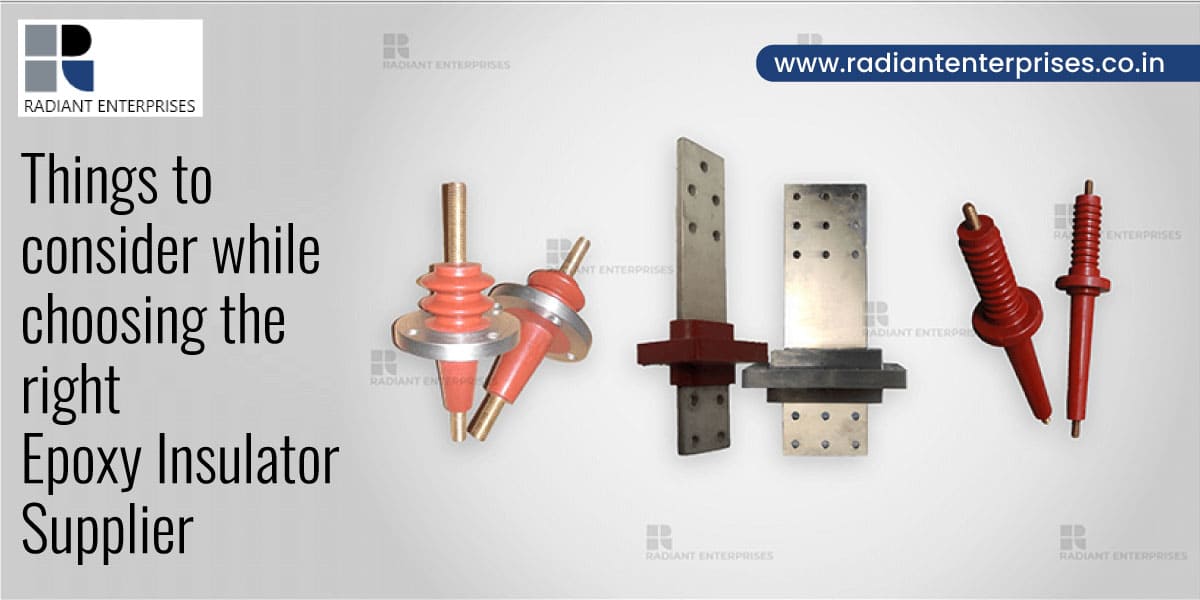
Fill all information details to consult with us to get services from us

To stop electricity from draining into the ground, overhead power lines use insulators to maintain their conductors on the poles. It is crucial to the proper function of the transmission lines. It is possible to design an insulator out of many various materials, such as wood, rubber, mica, plastic, etc. Ceramic, polymer, PVC, Glass, steatite, etc. are among the special materials utilised in the electrical system. However, specific composition, steatite, and glass materials are also employed in the insulator, with porcelain being the most prevalent.
Based on their rating, the following categories have been established for them. Each epoxy insulator in a transmission and distribution system features many insulating discs like this. Since 11kv was utilised by the reference disc, 66kv is used by the other discs.
Epoxy Insulators prevent electrical current from harming the machine and its operators. There may be dozens of insulation types to choose from, but only a handful will work for your business. Consider these guidelines when you shop for epoxy insulators.
Check for electrical properties first. Researching the electrical efficiency of each material is essential since an epoxy insulator without the necessary electrical characteristics is very useless. Insulation resistance, arc resistance, Dielectric strength are only few of the parameters that should be checked.
When evaluating mechanical components, price is another factor considered by every business manager or expert. After a certain amount of time or use, these components will inevitably become worn and require replacement. So, think about the money you'll spend on electricity and how often you'll need to replace insulators. You may be able to form a mutually advantageous collaboration with your supplier, depending on the scope of your business and the quantity of your orders.
Insulators are made using a wide range of materials such as mica, rubber, epoxy, glass, plastic, etc. However Epoxy Insulators are the best quality insulators from the above listed materials. Each has strengths and weaknesses that limit where it can be used most effectively, such as in an industrial context. Take note of how long various materials last as you explore them. A quick-wearing epoxy insulator that needs to be serviced and replaced every few months is not what you want. All electrical insulating materials should be long-lasting, however this is not always the case.
Every technician can benefit from knowing what to look for in an epoxy insulator. If you operate with electricity, having a high-quality epoxy insulator that is designed for your industry can make a world of difference in your efficiency and output.
Use insulation of a lower grade than that specified in the original design at your own peril; conversely, if insulation of a higher grade than that specified in the original design is used in place of A grade insulation, the service life of the transformer will be drastically reduced.
It's important to think about how well different materials insulate. Low cable, capacitor paper, and insulating board all have differing levels of insulation strength. Capacitor paper is the best, followed by cable paper.
Capacitive paper cannot be substituted for cable paper, and if two pieces of 1 mm thick cardboard are required, 2 mm thick cardboard cannot be utilised.
Insulation performance is superior in the former term compared to the latter. In order for material substitution to work, the insulating properties of the two materials must be equivalent.
When paper loses its mechanical strength, it also loses its insulating properties. Mechanical strength dictates that a minimum of two layers of insulating paper, separated by 1.5 mm thick cardboard, must be utilised for rolling an insulation cylinder.
When wet, cardboard swells, yet when it's dry, the thickness goes down. Cardboard can be deformed and shrunk, so keep that in mind if you need to repair a transformer.